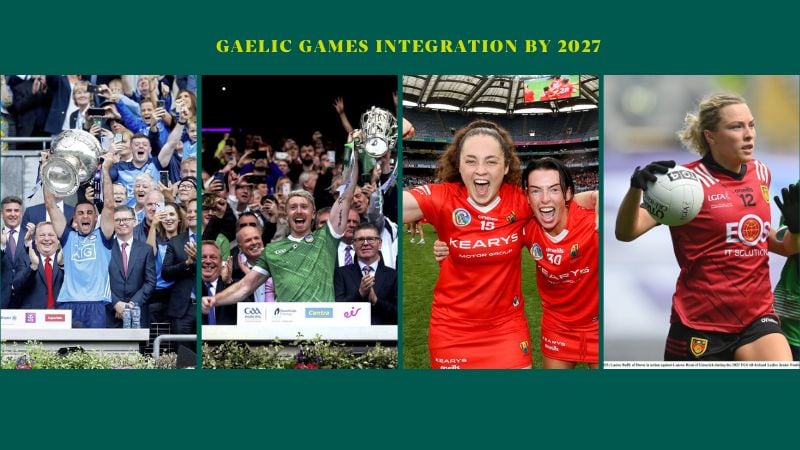The GAA will undergo a massive step forward in its history, with the integration of the Camogie Association and Ladies Gaelic Football Association to be delivered by 2027.
The proposal was passed in Dublin today, February 20, but has been on the lips of many a GAA fan for years.
This sends out a clear message of change and development across gaelic games.
Mary McAleese leads the committee looking into integration
Former President of Ireland Mary McAleese is the Steering Group for Integration Committee (SGI) Chairperson, which is the group assembled to tackle the issue of the integration of the GAA, Camogie Association and the Ladies’ Gaelic Football Association.
The SGI is made up of the three Uachtaráins (presidents); Hilda Breslin (Camogie), Larry McCarthy (GAA) and Mícheál Naughton (Ladies’ Gaelic Football), the three Ard Stiúrthóirí (directors); Sinéad McNulty (Camogie), Tom Ryan (GAA) and Helen O Rourke (Ladies’ Gaelic Football), Mary McAleese as Chair and is project managed by Mark Dorman.
McAleese said: “The SGI, after 18 months of intense listening and discussion, has now a recommended pathway to what will be the most historic development in Gaelic games and that is One Association for all of Gaelic games by 2027.
“Gaelic games are about to enter a new era. We are now at a point where the will of the members of the Gaelic Games Associations on integration can be delivered if our recommendations are followed and acted upon and made real.”
She also said that the merger will come into place at all levels, from club level to Croke Park, and that the plan will include ‘the entire structure, at local level right up to national level, that if people follow our pathway then in 2027 we will have a fully integrated association at every level’.
Vocal support and extensive study
Dr Katie Liston, a senior lecturer in Social Sciences of Sport at Ulster University, has been one of the loudest voices for integrating Gaelic games.
She authored a policy brief for an academic research group on the integration of the associations and how it can be achieved on June 6 2023.
In the paper, she recommended five measures for the future of Gaelic games; plan for a full integration process, agree on principles and values to guide that process, prioritise female representation, develop a funding model based on equity and build a new organisation for Gaelic games.
In a platform piece with The Irish News in June 2023, she spoke about the importance of equality of members in integration
She said: “If we get integration right, it will secure growth in Gaelic games and generate economic prosperity across society as a whole. Why? Because women will be included, equally.
“The systems of work and the organisational structures of a new organisation can support male and female members across all units: players, administrators, coaches, leaders, and officials.”
At the launch of the policy brief, Tyrone footballer Conor Meyler said he’s “truly excited at the thought of being part of an integrated association in which all players are treated equally.”
What does Gaelic games integration mean?
The integration of the GAA with the Camogie and Ladies’ Gaelic Football Associations means that there will be more streamlined registration for players of both clubs and counties.
There are multiple areas that the organisations have said will progress over the coming months.
A Joint Fixtures Review Workgroup will take place to help align fixtures across the codes.
A detailed audit of existing facilities and then the implementation of a facilities equal access policy will be carried out to give a clearer view of the investment needed to accommodate the extra facilities and resources needed for the integration.
A National Children’s Office will be set up to ensure the safeguarding of young players and the development of youth games across the counties.
There will be updated one club guidance and support and significant adoption of this model to ensure the clubs and counties represent everyone under their membership equally.
There will be a look into the membership of clubs to streamline all club players, coaches and volunteers under one membership for their club.
The streamlining of the injury benefit fund and staffing structures of the organisations will also be looked into.
The integration roadmap is yet to be laid out in full but over the next few weeks, each of the three associations’ annual congresses will hear about the developments of discussions and visions for the future.






